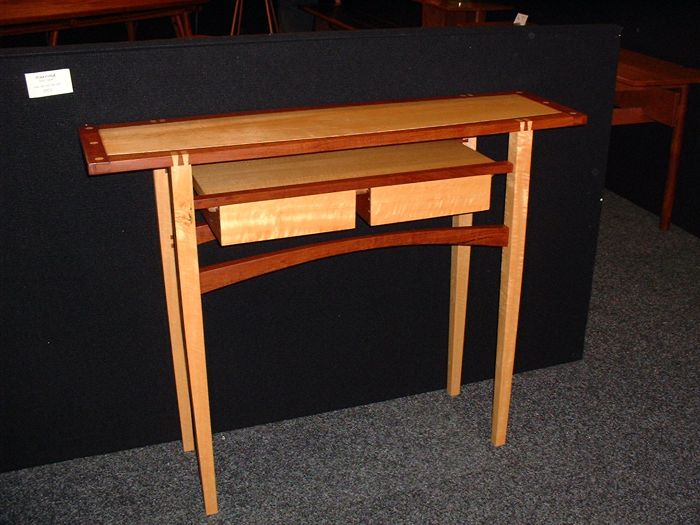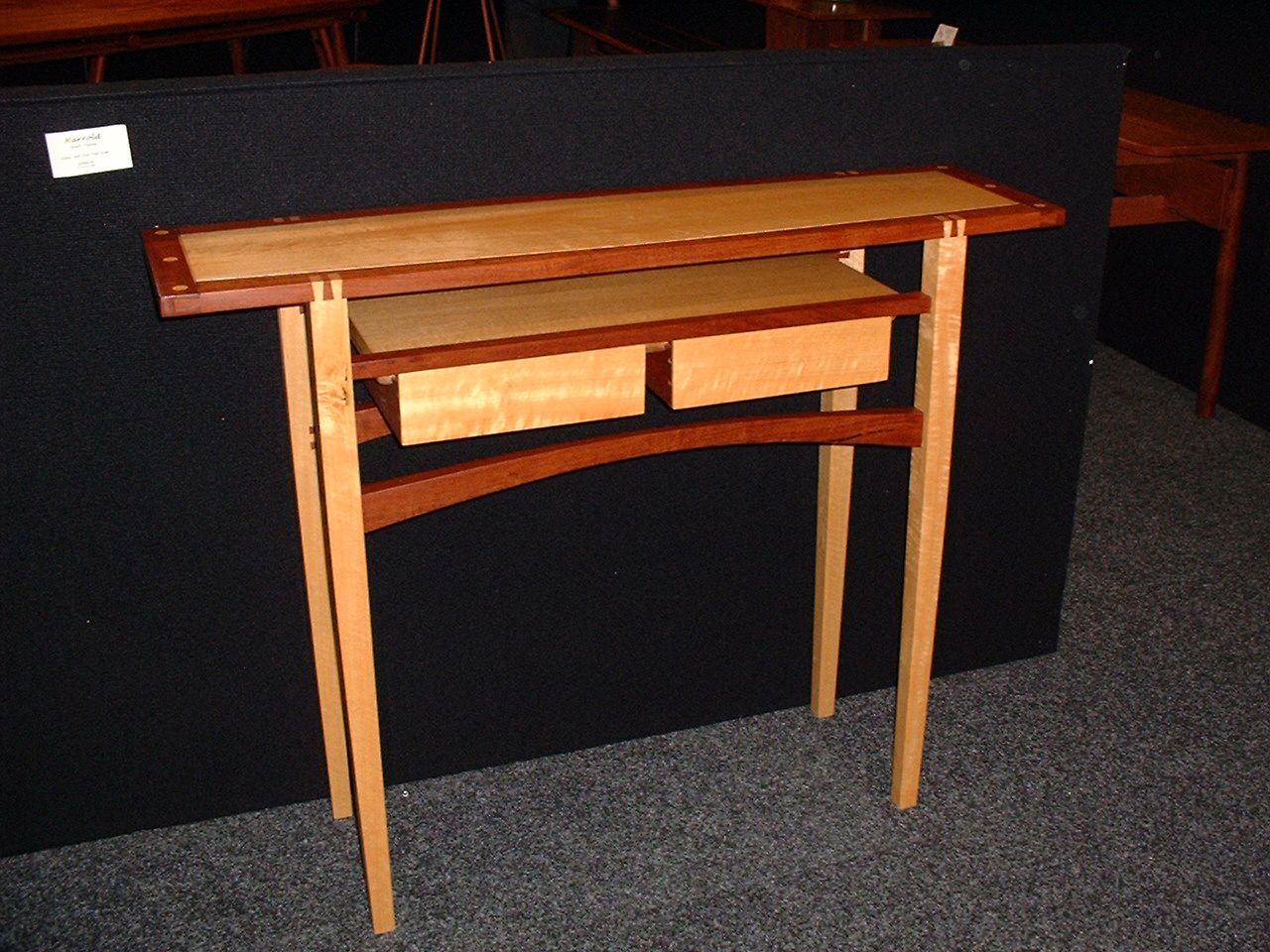
A hall table made from Sydney blue gum and silver ash. This was designed as an exercise in dovetails. Every joint is a dovetail of some kind. The breadboard ends are sliding dovetails; the rails connect to the legs with dovetails and even the drawer rails are sliding dovetails hung off the bottom of the table top.























Comments
I really like your hall table. It looks wonderful. I have one question. For the top piece you have used two types of wood. What method did you use so that when the large center piece expands in the spring and summer months it does not damage the outer wood frame? Please advise what precautions you have taken.
Thank you.
Dremlman
Hi Dremelman,
That's the job of the sliding dovetail on the breadboard end. The white plugs are inserted through elongated slots in the end of the centre panel to prevent the thin walls of the dovetail from warping, and for decoration of course!
The table is quite narrow, 290mm (bit less than a foot) and made from very dense silver ash, but I do see the movement in the breadboard ends in times of extreme dry or humidity.
Additional comment, after more thought and looking at the piece again. The expansion of the top will push the legs out a fraction. This is accommodated by the fact that the shelf, which is the defacto rail, is made from the same timber and of similar dimensions. Hence both top and shelf expand and contract at the same rate, placing little if any strain on the legs.
The runners for the drawers are sliding dovetails set into the shelf to keep it flat, and also allow for seasonal movement.
Hope this puts your mind to rest.
Log in or create an account to post a comment.
Sign up Log in